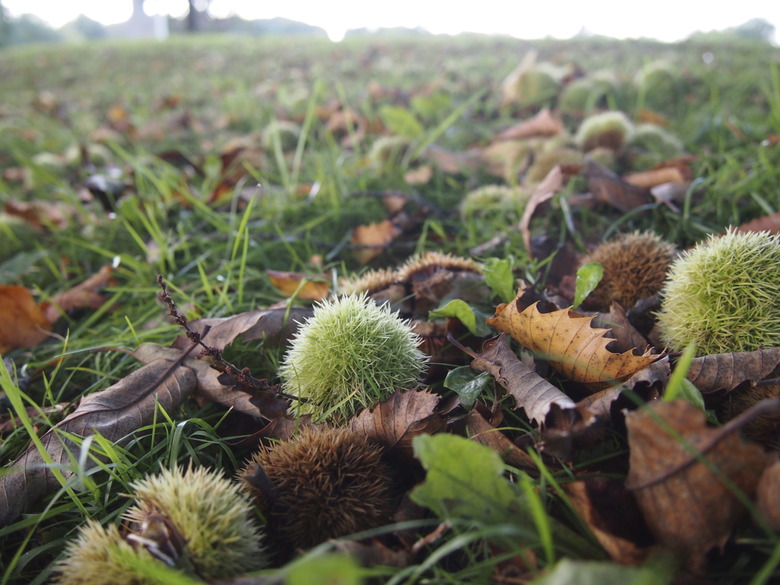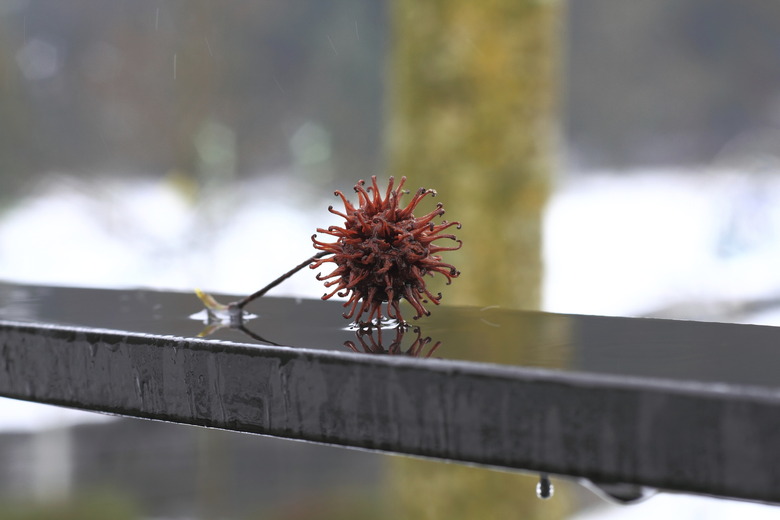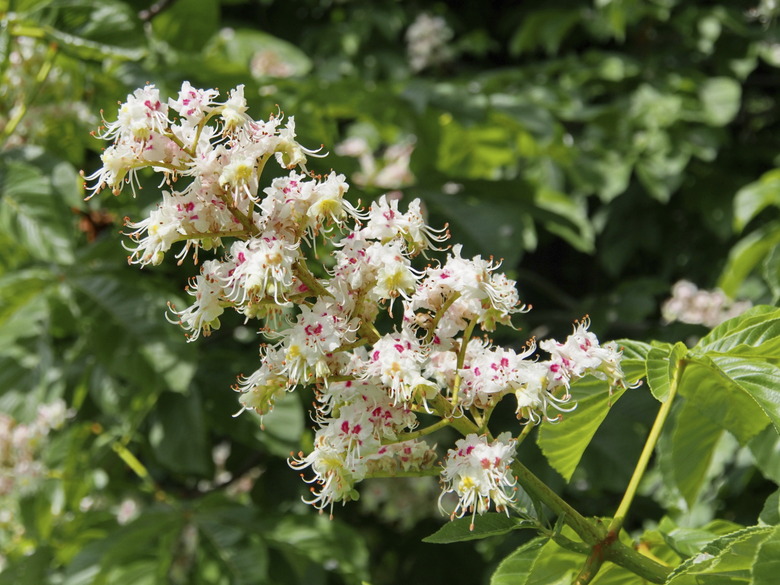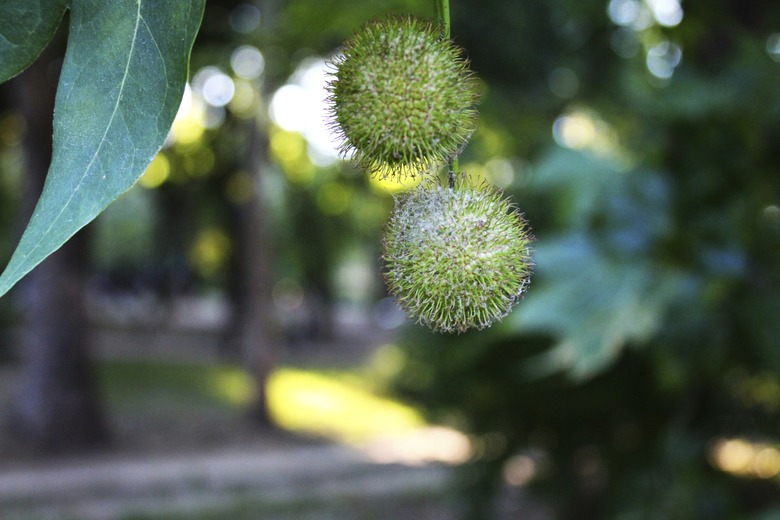Trees With Spiky Balls
Some trees have formidable-looking, round fruits that make you think twice before picking them. The hard, spiky protuberances can prick your fingers and make it hard work to extract edible seeds. Some of North America's largest, native, deciduous trees have fruits that are prickly balls. The fruits can add ornamental value while they remain on the tree, but they create a litter problem when they fall. Some can create safety risks for pedestrians since they roll underfoot.
Sweet Gum
Grown as a shade tree and for the colorful fall leaves, sweetgum (Liquidambar styraciflua) is native to the southeastern United States. Growing in U.S. Department of Agriculture plant hardiness zones 5 through 9, the tree can reach 60 to 70 feet tall and 45 feet wide. Inconspicuous flowers develop into globe-shaped, spike-studded fruits about 1 1/4 inch in diameter.They become brown and woody and the many spikes are hard and sharp. The small seeds they contain are valuable wildlife food. Sweet gum cultivars include the nearly seedless "Cherokee" (Liquidambar styraciflua "Ward") and seedless "Rotundiloba." (Liquidambar styraciflua "Rotundiloba"), both hardy to USDA zones 5 through 9.
Chestnut Trees
Fiercely spined chestnut (Castanea spp.) burs make harvesting the fruit a prickly business. Allow ripe fruits to fall to the ground rather than knocking them off the tree. Collect those with burs beginning to split open, but protect your hands with gloves. Chinese chestnuts (Castanea mollissima), hardy in USDA zones 5 through 8, have oval to round burs that are 1 to 3 inches long. At first green, the fruits are covered with so many spines that they resemble coarse, long fur. When ripe, burs dry to brown and spikes become hard. Hybrids between Chinese chestnut and American chestnut (Castanea dentata), which is hardy in USDA zones 4 through 8, are increasingly popular in home landscapes and orchards. Hybrids also have densely spiny burs.
Buckeye and Horsechestnut
Buckeyes (Aesculus spp.) are named for the resemblance of the seed's light-colored spot that resembles a deer's eye. Ohio buckeye (Aesculus glabra), which is hardy in USDA zones 4a through 7a, grows about 50 feet tall by 50 feet wide. Showy spring flowers are followed by spiny, round, very prickly fruits that are 1 to 3 inches long. European horsechestnut (Aesculus hippocastanum) has sharp spines on the leathery, golfball-sized fruit. They grow in USDA zones 3 through 8 and usually reach 50 to 75 feet tall. Showy spring flowers are white to cream.
Sycamore Trees
Sycamore trees (Platanus spp.) have round, 1 1/2 inch diameter, spiky-looking balls, but the spikes aren't fierce and sharp. At first green and somewhat fuzzy-looking, they dry into brown, bristly balls. They dangle from branches on long stems. Eastern sycamore (Platanus occidentalis), native to the eastern United States, is one of North America's most massive trees. It reaches 75 to 100 feet tall with trunk diameters from 3 to 8 feet wide. Hardy in USDA zones 4 through 9, it needs a large growing space. California sycamore (Platanus racemosa), which grows in USDA zones 7 through 10, is 30 to 80 feet tall. Both these trees have large leaves and attractive, mottled and peeling bark.
References
- Arbor Day Foundation: Sweetgum, American
- Monrovia: Cherokee Sweetgum
- Missouri Botanical Garden: Liquidambar Styraciflua "Rotundiloba"
- University of California Division of Agriculture and Natural Resources: Harvesting and Storing Your Home Orchard's Nut Crop
- Plants for a Future: Castanea Dentata – (Marshall.) Borkh.
- University of Florida IFAS Extension: Castanea Mollissima Chinese Chestnut
- National Gardening Association: Edible Landscaping: Yes, You Can Grow Chestnuts
- University of Florida IFAS Extension: Aesculus Glabra: Ohio Buckeye
- University of Florida IFAS Extension: Aesculus Hippocastanum: Horsechestnut




